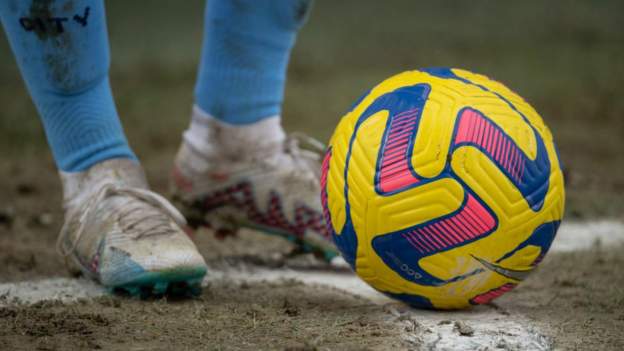More than 80% of female players at top European clubs have suffered regular discomfort because of their football boots, according to new research.
The European Clubs Association, which represents Europe’s clubs, surveyed 350 players from 16 top-tier teams.
It found that 82% felt discomfort which could affect their performance, while a fifth said they customised their boots in an attempt to improve comfort.
Football boots currently on the market are largely designed for white males.
The new data showed that 34% of female players, who were surveyed anonymously, reported discomfort specifically in their heel.
A majority used specialised insoles provided by podiatrists and some players needed to cut holes in their boots to avoid persistent rubbing and blisters.
The ECA found that heel discomfort was significantly higher among black players (48%), compared with 32% of white footballers.
“The numbers were staggering,” said Claire Bloomfield, the ECA’s head of women’s football. “We knew we were going to find something but those numbers really did shock us all.
“It highlighted the importance of this work and why it needs to be done now. The end goal is about inspiring industry change. It is highlighting a really key area in neglected research.”
Sports scientists have previously highlighted the lack of football kit designed for women, saying the use of boots and balls created for male players could be putting them at higher risk of injury.
The ECA research suggested issues relating to Achilles tendons and metatarsal stress fractures were linked to incorrect footwear.
Two in five players reported to the ECA that they did not feel the current football boot market offers good injury prevention.
Research also explored differences between female and male feet, including width, height of arches, metatarsal length, metatarsal joint angle and the ankle circumference relative to foot length.
“It was all around the foot, really highlighting that the shape of a football boot isn’t suitable for women and it’s not just an easy fix,” said Dr Katrine Kryger, a sports rehabilitation lecturer from St Mary’s University, which supported the ECA in its research.
“The area that generally had the highest issue was the heel of the foot which caused discomfort and pain. When we looked at it from an ethnicity perspective, it was 48% of black players who had heel discomfort.
“That highlights the fact that one size doesn’t fit all and ethnicity plays a part in that too.”
Funded by the ECA, the research is part of its commitment to gain further knowledge on football equipment and clothing which enhances safety, performance and comfort for female footballers.
Gathered over 18 months, the information so far also includes details on the placement of football boot studs and how they can impact the movement of female players’ feet.
“Our objective is pretty simple and that’s to get the right shoe to fit every women and girl playing football worldwide,” said Charlie Marshall, the ECA’s chief executive officer.
“That’s the starting point. How the market takes the research forward is the next step.”
Concern has risen again because of the number of high-profile women’s players suffering anterior cruciate knee ligament injuries, which studies show are far more prevalent among females compared to males.
Asked whether there was a direct correlation between incorrect footwear and injuries, Kryger said: “We don’t have that data yet. We don’t have anything to compare it with.
“We have the men’s research market and we know there are issues related to it. Wrong-fitted football boots can cause problems.
“One of the things we have said is that we shouldn’t just copy what the men are doing. Just because the men haven’t considered a specific bit of science, doesn’t mean we can’t for women’s football.”
The first phase of the research is still to be peer-reviewed and published but the intention is that it will become freely available to all football boot brands to help revolutionise female-specific designs.




















